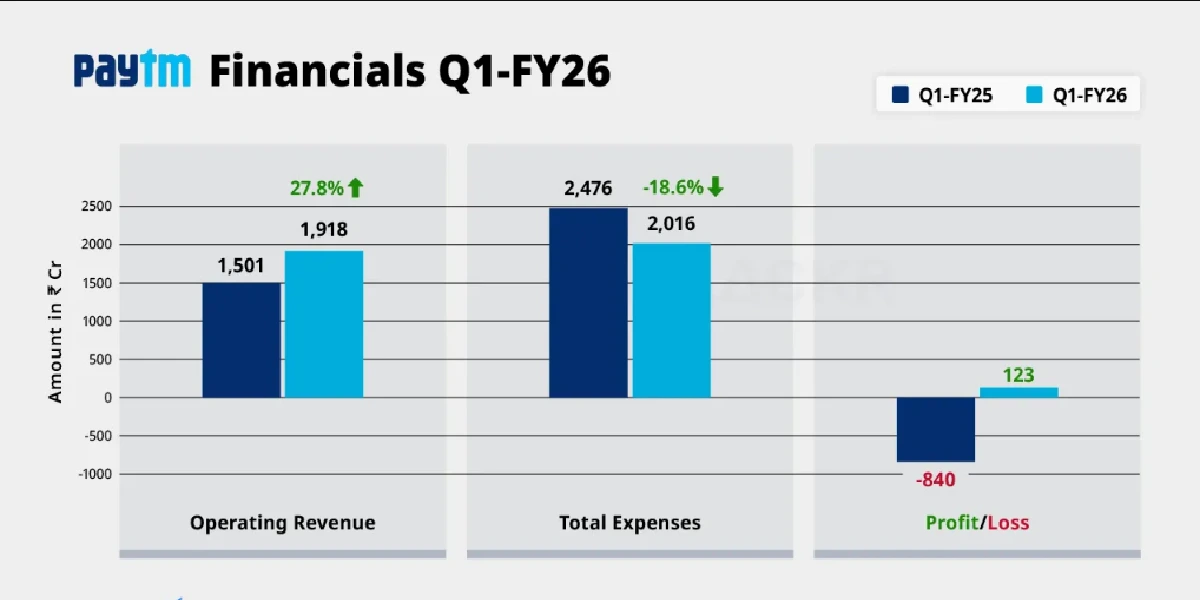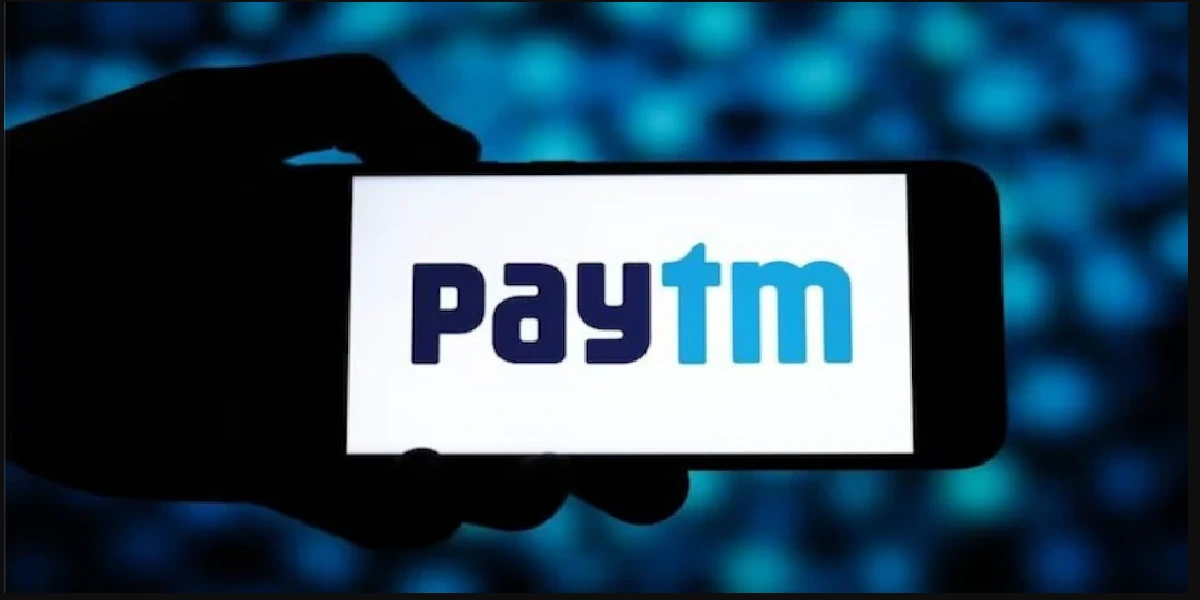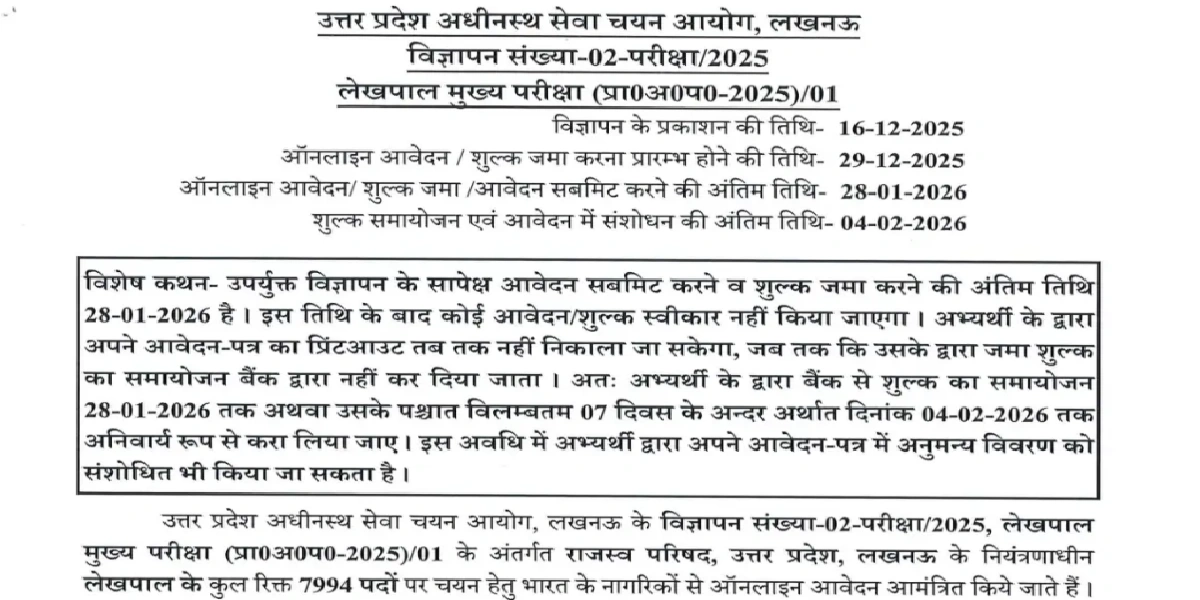In a dramatic turnaround, Paytm’s parent company, One 97 Communications, swung from a crushing ₹839 cr loss in Q1 FY25 to a ₹122–123 cr net profit in Q1 FY26. This isn’t just a blip—it’s a strategic pivot grounded in revenue gains, tight cost control, and AI‑powered efficiency.
Background Context
Paytm’s Journey Since Listing

Since its IPO in November 2021, Paytm had struggled to deliver consistent profits. While there was a profit spike in September 2024, that was due to a one‑time ₹1,345 cr gain from selling its entertainment ticketing biz—not core business performance.
Challenges Prior to Q1 FY26
Regulatory setbacks, such as RBI’s action against Paytm Payments Bank, hurt liquidity and trust. Heavy ESOP charges in Q4 FY25 also weighed down profitability
Top‑Line Performance
Revenue Growth Overview
Paytm posted ₹1,918 cr in operating revenue—up 28% YoY from ₹1,502 cr Sequential growth was modest (~0.3%), signaling stability
Payments vs Lending Exposure
Payment revenue surged 38% YoY to ₹529 cr.
Financial services (mainly merchant lending) skyrocketed 100% YoY, contributing ₹561 cr
Bottom‑Line Breakthrough
Net Profit Details
The company logged a ₹122.5 cr net profit, reversing a ₹839 cr YoY loss
EBITDA Turnaround
EBITDA flipped positive at about ₹72 cr (4% margin), against previous quarters of heavy losses
Drivers Behind Turnaround
Surge in Financial Services Revenue
Merchant loans and trailing Default Loss Guarantee income powered a doubling of the fintech distribution segment
Cost Control & AI‑Led Efficiency
ESOP and Employee Costs
ESOP expenses dropped 88%, and overall employee cost fell 32%, thanks to voluntary forfeitures by founder Vijay Shekhar Sharma
Marketing Expense Reduction
Marketing spends were slashed ~55%, from ₹221 cr to ₹100 cr
Modern tools, including AI-based optimization, helped spur operating leverage
Increased Other Income
Ancillary gains added ₹241 cr to total income, raising it to ~₹2,159 cr
Balance Sheet Strength
Cash Reserves
Paytm is sitting on ₹12,872 cr in cash, providing ample flexibility for expansion
GMV and Merchant Growth
Gross Merchandise Value hit ₹5.4 lakh cr (≈$65 bn), up 27% YoY, with ~1.3 cr subscription merchants—evidence of platform resilience
Sustainability of Profitability
Risks & Regulatory Headwinds
Downside risks include tougher personal loan conditions, RBI’s oversight of banking operations, and macroeconomic variability
Growth Outlook in Lending & Payments
With signs of recovery in personal loans and continued merchant lending, Paytm expects revenue stream diversification to sustain momentum
Strategic Takeaways for Investors
What This Means for Share Price
Positive signals could continue, but valuations expect sustained execution. Continued cost control and lending growth will be key price drivers.
Positioning in Fintech Landscape
This quarter demonstrates Paytm evolving from a payments-first app to a scalable, profitability-first fintech platform.
What to Watch in Q2 FY26
Lending volume trends and margin quality
Cost discipline: ESOP vs employee pay mix
Regulatory updates around banking and UPI
Growth in personal vs merchant lending
Conclusion
Paytm’s Q1 FY26 profitability marks a turning point—shifting from structural losses to sustainable profits through diversified revenue, disciplined cost control, and cash strength. While regulatory and credit-cycle risks linger, the fintech heavyweight is proving it can balance growth and profits.
Read also: MCC NEET UG Counselling Registration 2025






